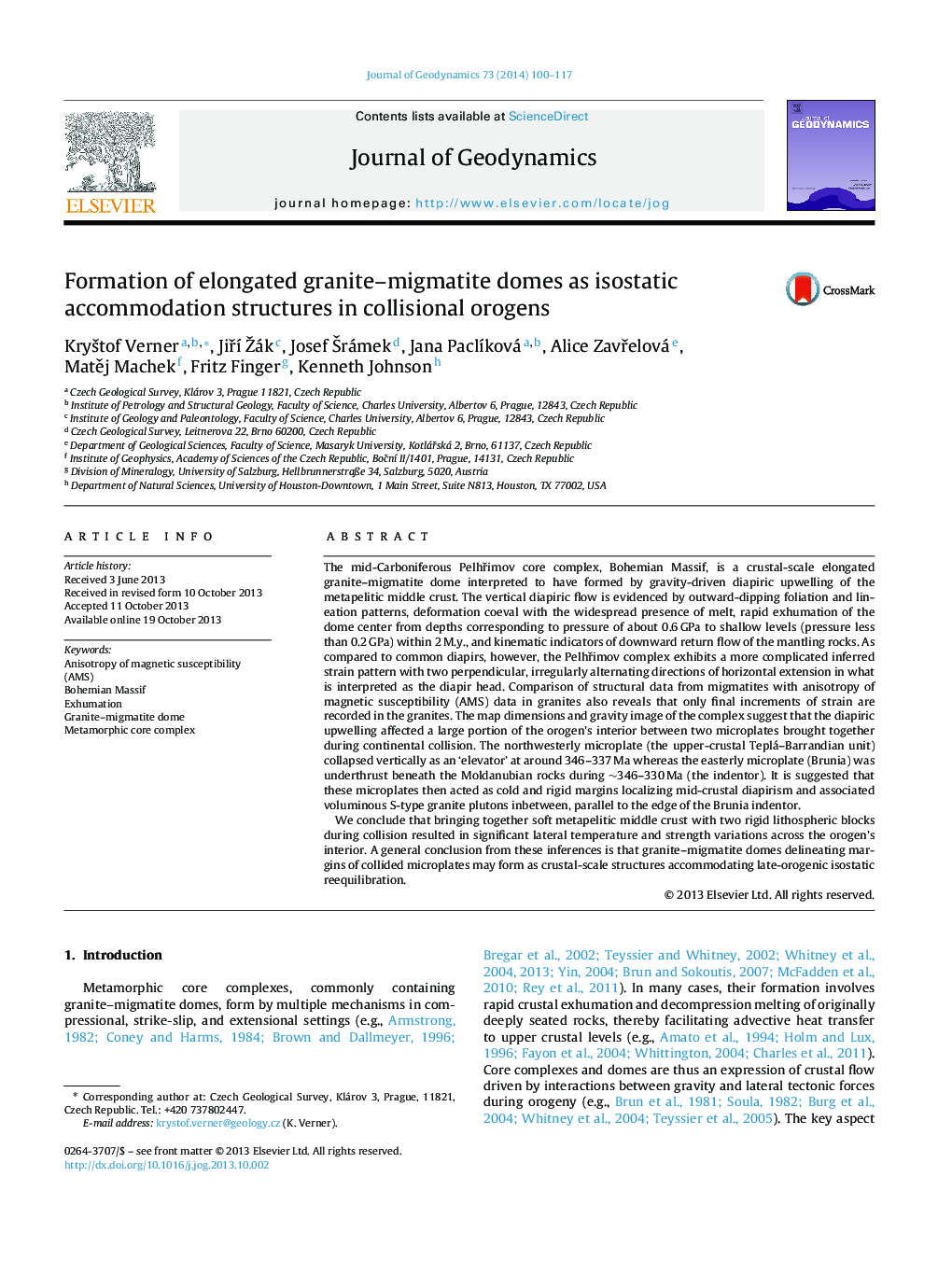| Article ID | Journal | Published Year | Pages | File Type |
|---|---|---|---|---|
| 4688134 | Journal of Geodynamics | 2014 | 18 Pages |
•The Pelhřimov complex is one of the largest granite–migmatite domes in the Variscides.•A record of isothermal decompression during diapiric flow of hot metapelitic crust.•The dome formed as an isostatic compensation structure after continental collision.
The mid-Carboniferous Pelhřimov core complex, Bohemian Massif, is a crustal-scale elongated granite–migmatite dome interpreted to have formed by gravity-driven diapiric upwelling of the metapelitic middle crust. The vertical diapiric flow is evidenced by outward-dipping foliation and lineation patterns, deformation coeval with the widespread presence of melt, rapid exhumation of the dome center from depths corresponding to pressure of about 0.6 GPa to shallow levels (pressure less than 0.2 GPa) within 2 M.y., and kinematic indicators of downward return flow of the mantling rocks. As compared to common diapirs, however, the Pelhřimov complex exhibits a more complicated inferred strain pattern with two perpendicular, irregularly alternating directions of horizontal extension in what is interpreted as the diapir head. Comparison of structural data from migmatites with anisotropy of magnetic susceptibility (AMS) data in granites also reveals that only final increments of strain are recorded in the granites. The map dimensions and gravity image of the complex suggest that the diapiric upwelling affected a large portion of the orogen's interior between two microplates brought together during continental collision. The northwesterly microplate (the upper-crustal Teplá–Barrandian unit) collapsed vertically as an ‘elevator’ at around 346–337 Ma whereas the easterly microplate (Brunia) was underthrust beneath the Moldanubian rocks during ∼346–330 Ma (the indentor). It is suggested that these microplates then acted as cold and rigid margins localizing mid-crustal diapirism and associated voluminous S-type granite plutons inbetween, parallel to the edge of the Brunia indentor.We conclude that bringing together soft metapelitic middle crust with two rigid lithospheric blocks during collision resulted in significant lateral temperature and strength variations across the orogen's interior. A general conclusion from these inferences is that granite–migmatite domes delineating margins of collided microplates may form as crustal-scale structures accommodating late-orogenic isostatic reequilibration.
Graphical abstractFigure optionsDownload full-size imageDownload as PowerPoint slide
